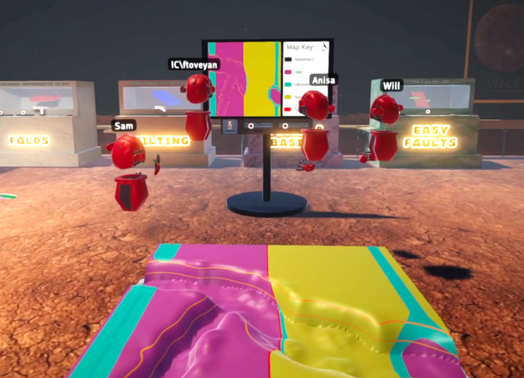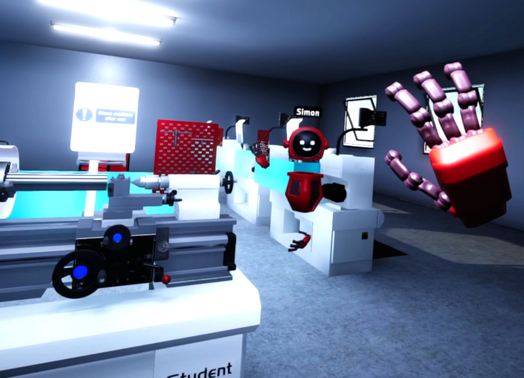Building ViRSE Worlds
Building VR Worlds with ViRSE
ViRSE worlds are constructed within the Unity engine using the ViRSE template.
Simple worlds can be constructed using a drag-and-drop visual design approach. ViRSE interaction features include InfoPoints, activatable buttons, more sophisticated interactable controls such as sliders and rotatable wheels, and objects that can be picked up and manipulated. The ViRSE platform handles network synchronization for all these, allowing multiple users to experience the same world together.
ViRSE worlds can consist of simple 3D environments, developed without a single line of code. This is ideal for simulating facilities or environments that are dangerous or impractical to take students to in the real world.
Click here to open ViRSE's developer documentation
More complex worlds that represent simulations of systems may require coding. ViRSE and Unity use the C# language, and ViRSE imposes few restrictions on what can be done. If you can envisage it in a video game, it can almost certainly be done inside ViRSE.
During development, the ViRSE template provides a simulated platform environment for testing and debugging. Once created, ViRSE worlds are exported into the live ViRSE platform for use.
Operational ViRSE Worlds

MapLab
MapLab is a geological history simulator, intended as a free-form laboratory to aid with the understanding of three-dimensional structures on two-dimensional maps... Students construct geological histories (layers, faults, folds, erosion etc) which generate a 3D block model of the geology for inspection, and a 2D map for comparison. The image shows a tutor group being led through a MapLab demonstration; like all ViRSE worlds, MapLab is 'multiplayer' by default.
MapLab was created by Khunakorn Limpsapapkasiphol and Mark Sutton (Earth Science & Engineering) through a Student Shapers project, Summer 2022.

SimuLathe
SimuLathe reproduces a real mechanical lathe used in Mechanical Engineering. Its goal is to provide a safe environment in which students can learn how the lathe controls work, and the safety procedures required to use the machine. The lathe is fully functional, and can be used to machine virtual metal cylinders into desired shapes.
SimuLathe was constructed by Ori Blich and Marc Masen (Mechanical Engineering) through a Student Shapers project, Summer 2022.



